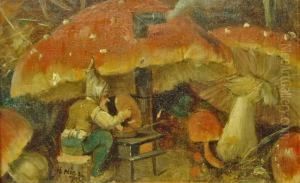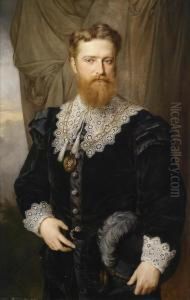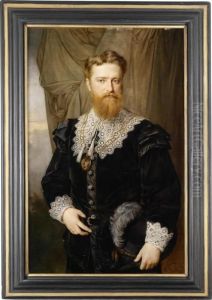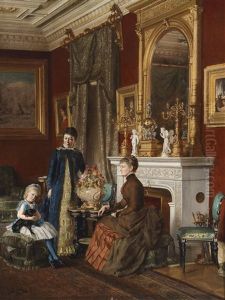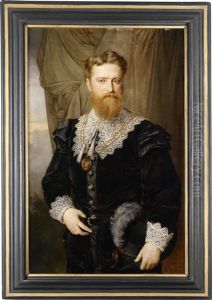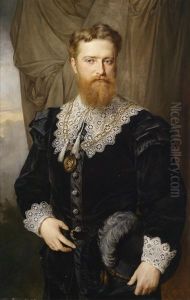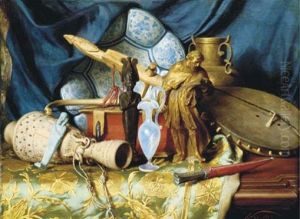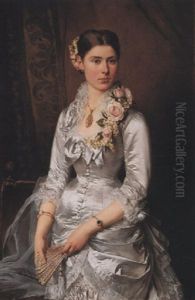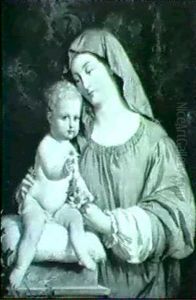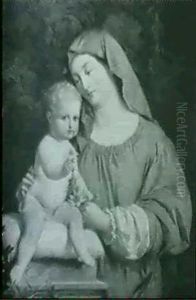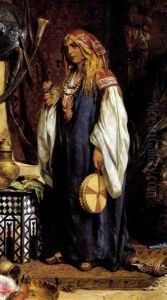Hermann Nigg Paintings
Hermann Nigg was an Austrian painter known for his religious compositions, portraits, and historical scenes. Born on October 13, 1838, in Graz, Austria, Nigg demonstrated an early talent for art and pursued his passion by studying at the Academy of Fine Arts in Vienna. He was a student of the prominent Austrian painter Johann Fischbach and also drew influence from the works of the Old Masters, a term that refers to European painters of skill who worked before about 1800, or in some definitions, before the end of the Baroque period.
During his career, Nigg became particularly noted for his skill in depicting religious scenes with a fine attention to detail and a rich use of color. His works often contained elaborate compositions and were imbued with a sense of piety and reverence, which resonated with the religious and cultural sentiments of his time. As a history painter, Nigg was also interested in creating works that depicted moments from the past with dramatic effect and historical accuracy.
In addition to his religious and historical paintings, Nigg was also commissioned to produce portraits for various patrons. His portraits are characterized by a keen ability to capture the likeness and personality of his subjects, often set against a backdrop that reflects their social status or personal interests.
Nigg's contributions to art were recognized in his time, and he received various honors and accolades for his work. He exhibited his paintings in numerous shows and was a respected member of the art community in Austria. His legacy is preserved through the works that remain, which continue to be appreciated for their craftsmanship and artistic merit.
Hermann Nigg passed away on September 9, 1919, in Vienna. Although he may not be as widely known as some of his contemporaries, his work provides a valuable insight into the religious and historical sensibilities of the 19th century in Austria and the broader Habsburg Empire. Today, his paintings can be found in museums, churches, and private collections, where they are studied and admired by art enthusiasts and historians alike.
